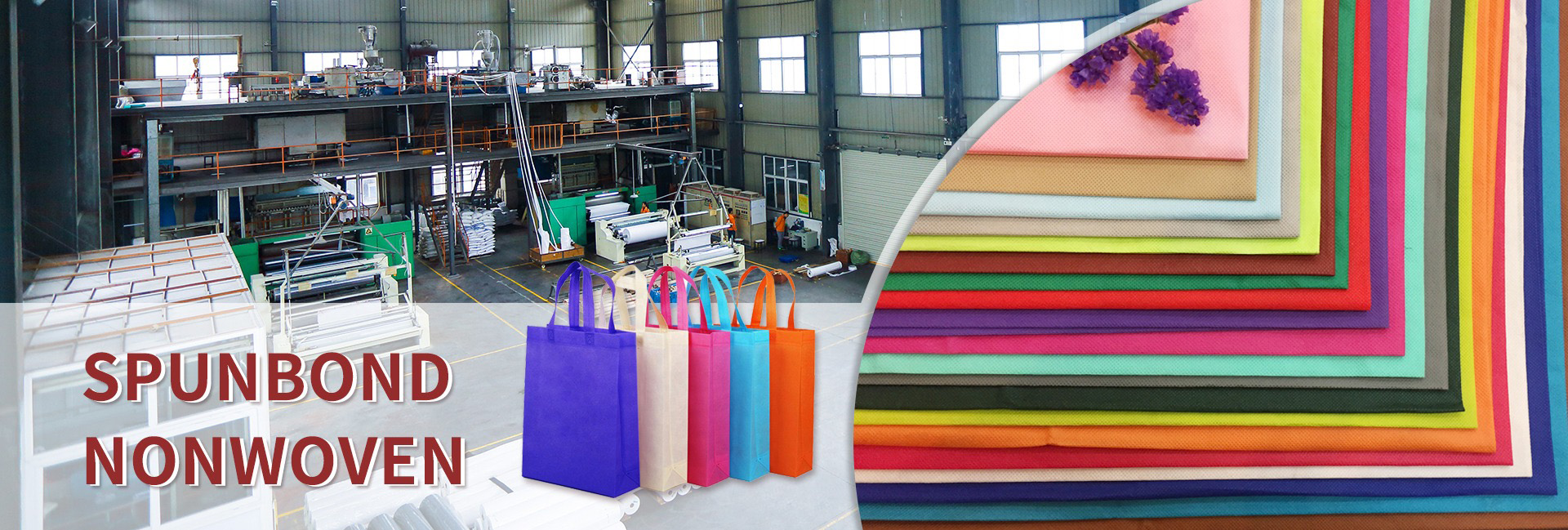The laminating process of non-woven fabric is to combine the film with non-woven fabric, giving the material better waterproof, sealing, strength and other properties. It is widely used in packaging, medical, agriculture and other fields. Among them, hot melt adhesive film coating and laminating (flow extending film) film coating are two common processes, which have significant differences in principles, characteristics, and applications:
Hot melt adhesive film coating process
Principle
Use hot melt adhesive to bond the film with non-woven fabric. The specific process is as follows:
First, heat and melt the solid hot melt adhesive into a fluid;
Apply hot melt adhesive evenly on the surface of non-woven fabric or film using coating equipment;
Quickly bond the two together, compact them with a pressure roller, and complete the bonding after the adhesive cools and solidifies.
Characteristic
High adhesive strength: After curing, hot melt adhesive has stable viscosity and good temperature resistance (usually able to withstand -40 ℃~80 ℃), suitable for scenarios that require repeated friction or force.
Wide material compatibility: can be matched with various films (such as PE, PET, CPP, etc.) and different types of non-woven fabrics (spunbond, needle punched, etc.), with strong flexibility.
Good environmental friendliness: Some hot melt adhesives use solvent-free formulas to reduce volatile emissions and meet environmental requirements such as food packaging.
High cost: The cost of hot melt adhesive materials and heating equipment is relatively high, and the production speed is limited by the coating and cooling time.
Typical applications
Food packaging (such as bread bags, snack bags): It is necessary to ensure sealing and safety;
Medical supplies (such as surgical kits, protective clothing): require tear resistance and resistance to liquid penetration;
Industrial packaging (such as heavy-duty cargo packaging bags): requires high-strength bonding.
Film (Flow Extended Film) Coating Process
principle
Directly pour molten plastic onto the surface of non-woven fabric and form a thin film layer after cooling. The specific process is as follows:
Plastic particles (such as PE and PP) are heated and melted into a melt by an extruder;
The melt is evenly sprayed onto the surface of the non-woven fabric through the mold head;
Through rapid cooling and shaping by a cooling roller, the plastic and non-woven fabric are tightly integrated.
characteristic
High production efficiency: No need for additional glue coating, one-step film covering, speed can reach 100-300 meters/minute, suitable for large-scale production.
Low cost: Directly using plastic pellets eliminates adhesive costs and equipment maintenance is relatively simple.
Controllable film thickness: The film thickness (usually 0.01~0.1mm) can be controlled by adjusting the die head and extrusion amount to meet different waterproof requirements.
Adhesive strength is limited: it relies on the thermal fusion of plastic and non-woven fabric, with weak temperature resistance (generally ≤ 60 ℃), and may delaminate at high temperatures.
Typical applications
Disposable items (such as shopping bags, raincoats): focus on waterproofness and low cost;
Agricultural coverings (such as plastic film, seedling bags): require weather resistance and a certain degree of breathability;
Packaging lining (such as courier bags, moisture-proof bags): The main requirements are waterproof and lightweight.
The core difference between the two processes
The hot melt adhesive film bonding method relies on hot melt adhesive bonding, which has good temperature resistance (-40 ℃~80 ℃), slow production speed (limited by cooling time), high cost (adhesive+equipment), environmental friendliness, and solvent-free type is more environmentally friendly.
The bonding method of film coating involves the fusion of plastic with non-woven fabric after melting, with weak temperature resistance (usually ≤ 60 ℃), fast production speed (one-step molding), low cost (direct use of plastic particles), environmental friendliness, and the possibility of producing a small amount of plastic volatiles.
When choosing, it is necessary to consider the product’s temperature resistance requirements, strength requirements, production scale, and cost budget comprehensively. For example, high-end medical supplies commonly use hot melt adhesive film coating, while low-cost disposable shopping bags often use film coating technology.
Dongguan Liansheng Non woven Technology Co., Ltd. was established in May 2020. It is a large-scale non-woven fabric production enterprise integrating research and development, production, and sales. It can produce various colors of PP spunbond non-woven fabrics with a width of less than 3.2 meters from 9 grams to 300 grams.
Post time: Jul-17-2025

